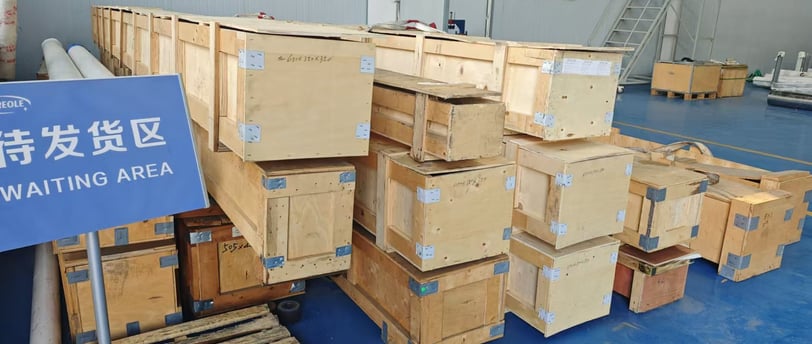304 vs 316 vs 317L Stainless Steel Tubing: Which is Right for You?
Explore 304 vs 316 vs 317L Stainless Steel Tubing to choose the best alloy for corrosion resistance, durability, and cost-efficiency in various applications, from general to high-chloride environments.
10/26/20243 min read


Guide to Choosing 304, 316, or 317L Stainless Steel Tubing
When selecting stainless steel tubing for industrial applications, understanding the differences between 304, 316, and 317L stainless steel can help ensure optimal performance and durability. Each alloy has unique properties suited for specific environments, corrosion resistance levels, and strength requirements. Here, we’ll break down the characteristics of each type, ideal applications, and factors to consider for making the best choice for your needs.
1. 304 Stainless Steel Tubing
Properties and Composition
304 stainless steel is one of the most widely used alloys in the industry due to its versatility, affordability, and resistance to corrosion. Composed of approximately 18% chromium and 8% nickel, it is often referred to as “18-8” stainless steel. This alloy provides excellent corrosion resistance in general environments, including exposure to various acids, alkaline solutions, and chloride-free water.
Best Applications
304 stainless steel tubing is ideal for applications where moderate corrosion resistance is sufficient, such as in kitchen equipment, automotive parts, and structural components. Its strength and ease of fabrication make it popular for general-purpose applications. However, 304 is not the best choice for environments with high chloride exposure, as it can be susceptible to pitting.
Advantages and Limitations
Advantages: Affordable, easy to source, and versatile.
Limitations: Not ideal for environments with high chloride exposure or intense chemical processes.
2. 316 Stainless Steel Tubing
Properties and Composition
316 stainless steel, known as “marine-grade” stainless steel, contains molybdenum in addition to chromium and nickel, enhancing its resistance to pitting and crevice corrosion, especially in chloride environments. Its composition typically includes 16-18% chromium, 10-14% nickel, and 2-3% molybdenum, which gives it higher corrosion resistance compared to 304.
Best Applications
316 is preferred in harsh environments with saltwater exposure, such as marine applications, chemical processing, and pharmaceuticals. It is also commonly used in food and beverage processing equipment where sanitation is critical, as it withstands regular cleaning and sterilization without corroding.
Advantages and Limitations
Advantages: Excellent corrosion resistance, especially in chloride-rich environments; durable in harsh, chemical-prone applications.
Limitations: Higher cost than 304, which may not be necessary for moderate applications.
3. 317L Stainless Steel Tubing
Properties and Composition
317L stainless steel is an austenitic alloy with even higher molybdenum content than 316, offering superior corrosion resistance and strength. This alloy is designed for heavy-duty applications involving high temperatures and aggressive environments. The “L” in 317L denotes “low carbon,” which improves weldability and reduces the risk of carbide precipitation during welding.
Best Applications
317L is best for high-chloride environments and applications with frequent exposure to sulfuric, phosphoric, or acetic acids. It is particularly beneficial in industries such as pulp and paper, chemical processing, and pharmaceuticals, where extreme resistance to corrosion and high strength are essential.
Advantages and Limitations
Advantages: Exceptional corrosion resistance and durability, particularly suited for aggressive chemical environments and high-temperature applications.
Limitations: Highest cost among the three options, often overperforming for standard applications.
Factors to Consider When Choosing
Corrosion Resistance: 304 is suitable for general environments, 316 for moderate chloride environments, and 317L for high chloride or acidic environments.
Cost: 304 is the most cost-effective, with 316 and 317L being progressively more expensive due to higher nickel and molybdenum content.
Application Requirements: For heavy-duty, high-temperature, or highly corrosive environments, 317L is ideal. For marine or saltwater applications, 316 is suitable, and 304 works well in less demanding settings.
Weldability: 317L, with its low carbon content, is preferable for applications requiring welding, as it reduces the risk of carbide precipitation.
Conclusion
Selecting between 304, 316, and 317L stainless steel tubing depends on your specific application needs, environment, and budget. 304 is ideal for general-purpose applications, while 316 and 317L are better for corrosive or high-stress environments. Understanding these factors can help you make a choice that optimizes both performance and cost-efficiency in your projects.

Sheentube
High-quality stainless steel tubes for industries.
+86 15203012590
© 2024. All rights reserved.
